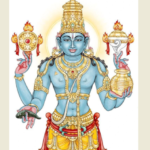Hyderabad, The South-East Zone Task Force Police, in collaboration with the Malakpet Police, arrested four out of six assailants involved in the murder of CPI leader Ketawat Chandu Rathod. Gold jewelry, a pistol, a revolver, four coconut-cutting knives, and a live cartridge were seized from the accused.
The Swift car used in the murder was confiscated on the same day of the crime. Deputy Commissioner of Police (South-East Zone) S. Chaitanya Kumar addressed a press conference, stating that on the morning of July 15 at 7:20 AM, CPI leader Ketawat Chandu Rathod, a resident of Brindavan Colony, Chaitanyapuri, was shot dead near the GHMC Park in Shalivahana Nagar.
Based on the complaint received, the police registered a case and arrested four assailants, including the main conspirator, while two remain at large. The primary accused, Donti Rajesh alias Rajanna alias Kanna (48), a CPI leader originally from Sitarampuram, Janagaon district, and currently residing in Satyanagar Colony, Uppal Bagayat, plotted the murder out of revenge against Ketawat Chandu.
Rajanna and three others arrested, two fugitives – Old dispute with Rathod
In this case, Rajanna and his associates—Arjun Gyan Prakash (26) from Girijan Colony, Yellayyapalem, Kodavalu Mandal, Nellore; Lingi Baby Rambabu (30) from Kottakadwa Village, Maipadu Mandal, Nellore; and Kanduku Prashant (30) from SC Colony, Addagudur Yadadri Bhongir—were arrested.
Two others—Kumbha Edukondalu from Nalla Pochamma Vaishali Nagar, Bhupesh Gupta Nagar, Karmanghat, and Srinivas alias Nagaraju, a deputy commander of the Praja Pratighatana Party from Ilendu—remain at large. The police revealed that the main accused, Rajesh, and the deceased, Ketawat Chandu Rathod, had been friends for the past four years and were both active in the CPI party. Rathod was a member of the party’s state council.
Meanwhile, Rajesh worked as the state secretary for the CPI-ML Red Flag Party. With Rathod’s support, Rajanna had set up 1,300 huts for party workers on 100 acres of land in Kuntuluru village, Hayathnagar Mandal, in January 2022.
Murder plot over money and disputes
Ketawat Chandu Rathod had allegedly extorted ₹13 lakh from supporters of Rajanna, Edukondalu, and Kanduku Prashant. Rathod later defamed Rajanna within the party, accusing him of not handing over the extorted money meant for the hut construction. Additionally, Rathod and Rajanna were embroiled in a dispute over ₹12 lakh allegedly extorted from builder Balareddy.
Furthermore, Rathod was accused of having an illicit relationship with Rajanna’s wife. Rajanna believed that Rathod had caused him a loss of ₹50 lakh and tarnished his reputation within the party. Rajanna also claimed that Rathod posed a threat to his life.
For these reasons, Rajanna conspired with his associates to kill Rathod. As part of the plan, Rajanna rented a Swift car and provided four coconut-cutting knives and chili powder to his accomplices. On the morning of July 15, all six accused arrived at Rathod’s house at 6 AM, waiting for him to step out. However, they failed to kill him near his residence.
Rathod murdered at Shalivahana Park, four accused arrested
The accused then drove to GHMC Park in Shalivahana Nagar and waited outside. At 7:20 AM, as Rathod exited the park after his walk, Prashant threw chili powder into his eyes. Arjun Gyan Prakash and Srinivas alias Nagaraju then shot Rathod. Three
GHMC Park
GHMC Park, maintained by the Greater Hyderabad Municipal Corporation (GHMC), is a public recreational space in Hyderabad, India, designed to offer green areas, walking paths, and playgrounds for residents. These parks were developed as part of urban beautification and environmental initiatives, with many being upgraded or established in the early 2000s to enhance community well-being. They serve as vital urban lungs, promoting leisure, fitness, and social interaction in the city.
Brindavan Colony
Brindavan Colony is a well-known residential neighborhood in Hyderabad, India, established in the 1960s as part of urban development efforts. It is recognized for its well-planned layout, green spaces, and proximity to key institutions like Osmania University. Over time, it has grown into a vibrant community with a mix of residential, commercial, and educational hubs.
Chaitanyapuri
Chaitanyapuri is a neighborhood in Delhi, India, named after the 15th-century Bengali saint Chaitanya Mahaprabhu, a key figure in the Gaudiya Vaishnavism tradition. The area is known for its cultural and religious significance, particularly for the Bengali community, and houses temples and institutions dedicated to Chaitanya Mahaprabhu’s teachings. It serves as a spiritual and cultural hub, reflecting the saint’s legacy of devotion and bhakti (devotional) movement in Hinduism.
Shalivahana Nagar
Shalivahana Nagar is a residential and commercial neighborhood in Hyderabad, India, named after the ancient Indian king Shalivahana, who is associated with the Shaka era calendar. The area is known for its bustling markets, cultural diversity, and proximity to key landmarks like the Secunderabad Railway Station. While not a historical site itself, its name reflects the region’s connection to India’s rich historical and cultural heritage.
Sitarampuram
Sitarampuram is a village in the Indian state of Andhra Pradesh, known for its cultural and historical significance, particularly in relation to traditional Telugu heritage. While specific historical details about the village are limited, it is recognized for its rural charm, agricultural practices, and local traditions. The name «Sitarampuram» suggests a possible connection to the Hindu goddess Sita, reflecting the area’s religious and cultural roots.
Janagaon district
Janagaon district is a region in the Indian state of Telangana, established in 2016 after being carved out from the Warangal district. It is known for its cultural and religious significance, particularly as the home of the *Gnana Saraswati Temple* in Basar, a major pilgrimage site dedicated to the Hindu goddess of wisdom. The area has historical ties to the Kakatiya dynasty and is recognized for its agricultural economy, with crops like cotton and pulses being prominent.
Satyanagar Colony
Satyanagar Colony is a residential neighborhood in India, known for its peaceful environment and well-planned layout. While specific historical details about its founding are limited, it is part of the urban development in cities like Bhubaneswar or other regions, often named to reflect values like «Satya» (truth). Over time, it has grown into a modern locality with homes, markets, and community spaces.
Uppal Bagayat
Uppal Bagayat is a historic garden located in Nagpur, Maharashtra, India, known for its Mughal-inspired architectural style and lush greenery. Built during the reign of the Bhonsle dynasty in the 18th century, it served as a royal retreat and is famous for its intricate water channels and symmetrical design. Today, it remains a popular cultural and recreational site, reflecting the region’s rich heritage.






